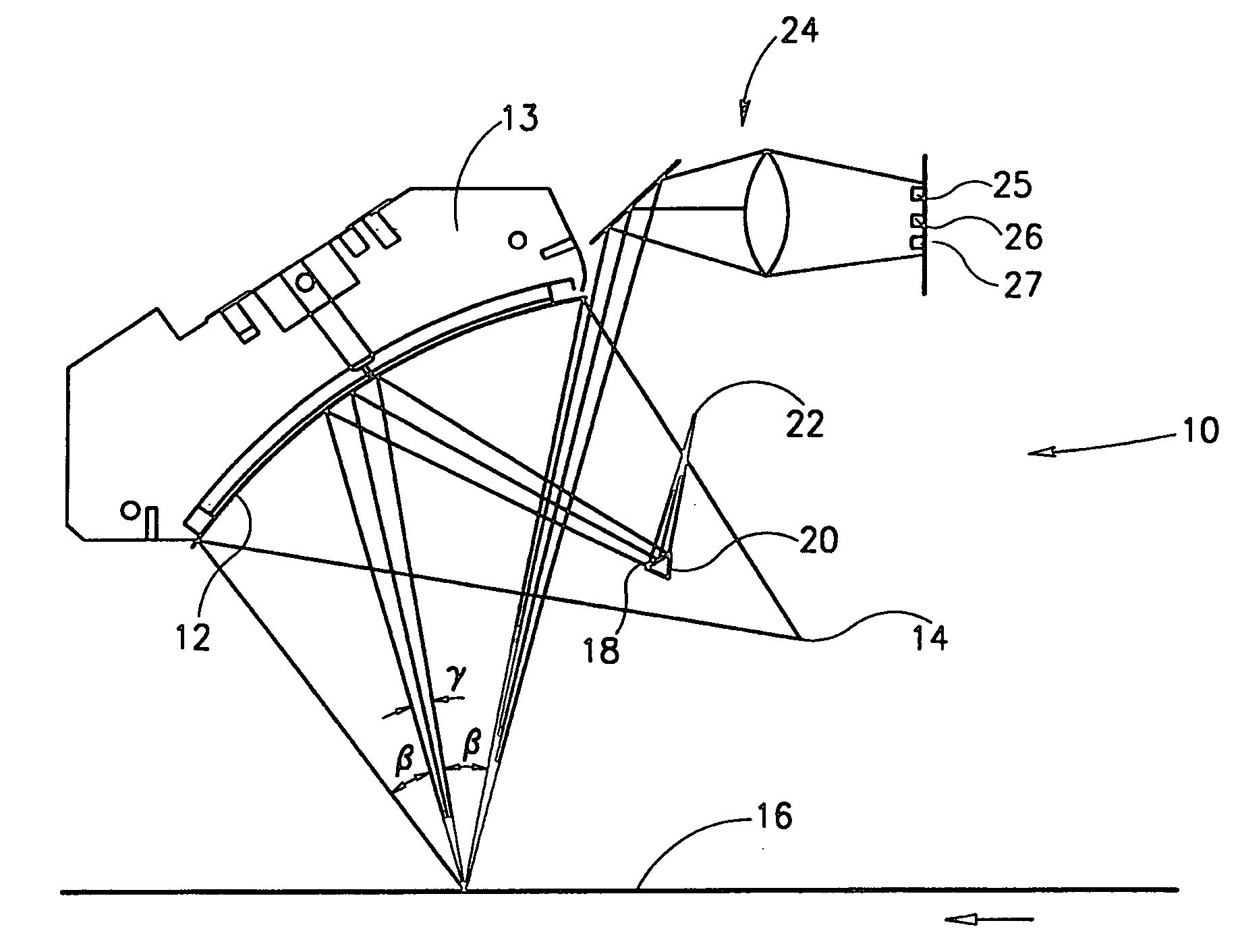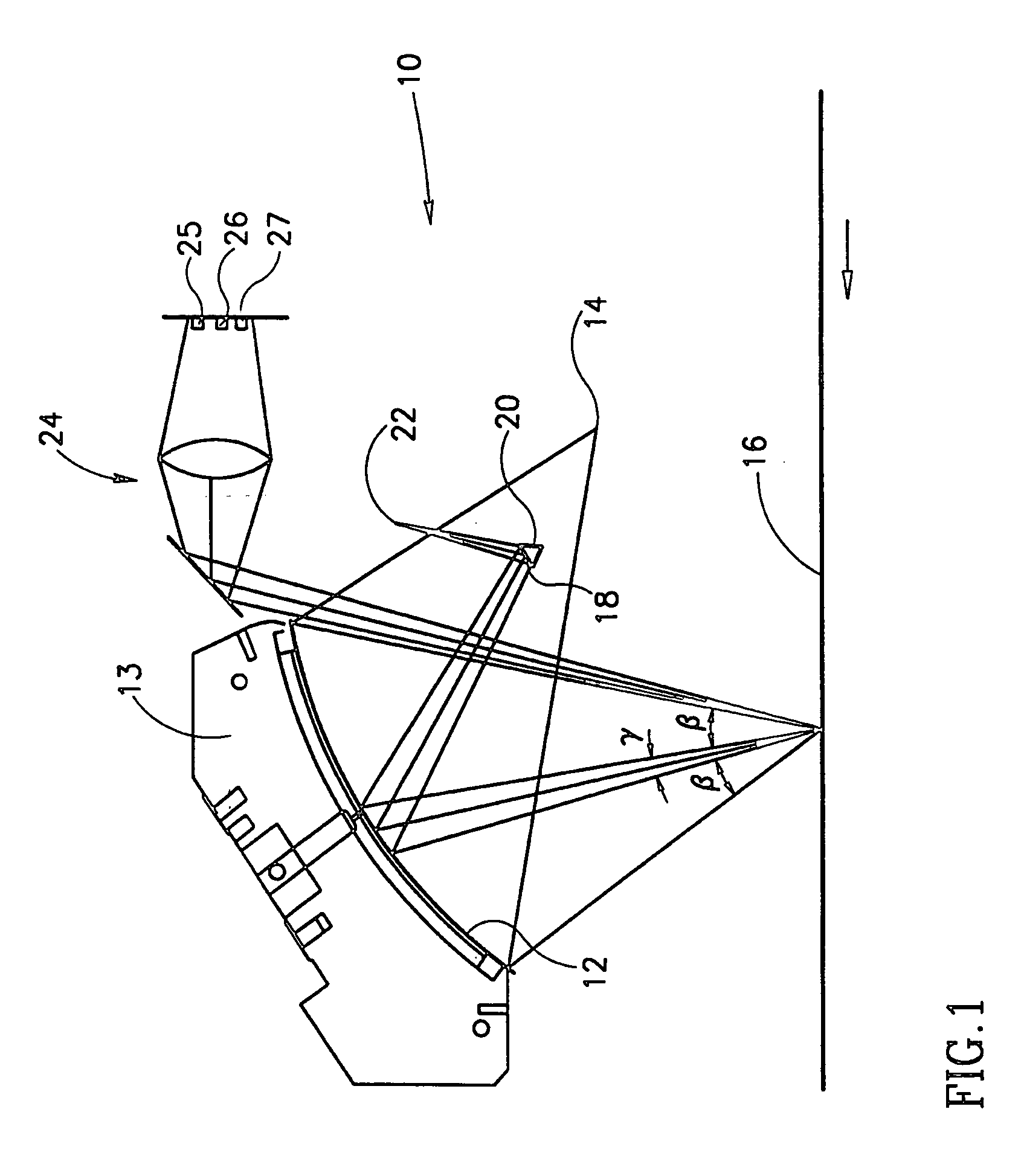Illuminator for inspecting substantially flat surfaces
a flat surface, illumination technology, applied in the direction of optically investigating flaws/contamination, mirrors, instruments, etc., can solve the problems of insufficient long life of conventional arrays and illuminators, inability to ensure the smooth blend of on-axis illumination and off-axis illumination, and inability to accurately detect the entire board. , to achieve the effect of reducing the noise ratio, reducing the noise, and reducing the amount of ligh
- Summary
- Abstract
- Description
- Claims
- Application Information
AI Technical Summary
Benefits of technology
Problems solved by technology
Method used
Image
Examples
Embodiment Construction
[0090]FIG. 1 shows a perspective view of a simplified schematic of an illuminator 10, in accordance with a preferred embodiment of the present invention. Illuminator 10 comprises a cylindrical reflector or mirror 12 having a substantially elliptical shape and a limited extent with an off-axis substantially uniform linear source of illumination 14 placed at one focus thereof and a workpiece or other substrate 16, to be optically examined placed at another focus thereof. A front surface strip mirror 18 is placed between off-axis source 14 and mirror 12, with the mirrored surface facing away from off-axis source 14. The width of strip mirror 18 is such that it allows light from off-axis source 14 to be concentrated by mirror 12 and to reach substrate 16 from two angular sectors each having a width β each as shown, separated by a wedge shaped region of angular extent γ. It should be noted that while strip mirror 18 is shown as being mounted on a substrate 20 which has the same width as ...
PUM
| Property | Measurement | Unit |
|---|---|---|
| thick | aaaaa | aaaaa |
| length | aaaaa | aaaaa |
| angles | aaaaa | aaaaa |
Abstract
Description
Claims
Application Information
 Login to View More
Login to View More - R&D
- Intellectual Property
- Life Sciences
- Materials
- Tech Scout
- Unparalleled Data Quality
- Higher Quality Content
- 60% Fewer Hallucinations
Browse by: Latest US Patents, China's latest patents, Technical Efficacy Thesaurus, Application Domain, Technology Topic, Popular Technical Reports.
© 2025 PatSnap. All rights reserved.Legal|Privacy policy|Modern Slavery Act Transparency Statement|Sitemap|About US| Contact US: help@patsnap.com



